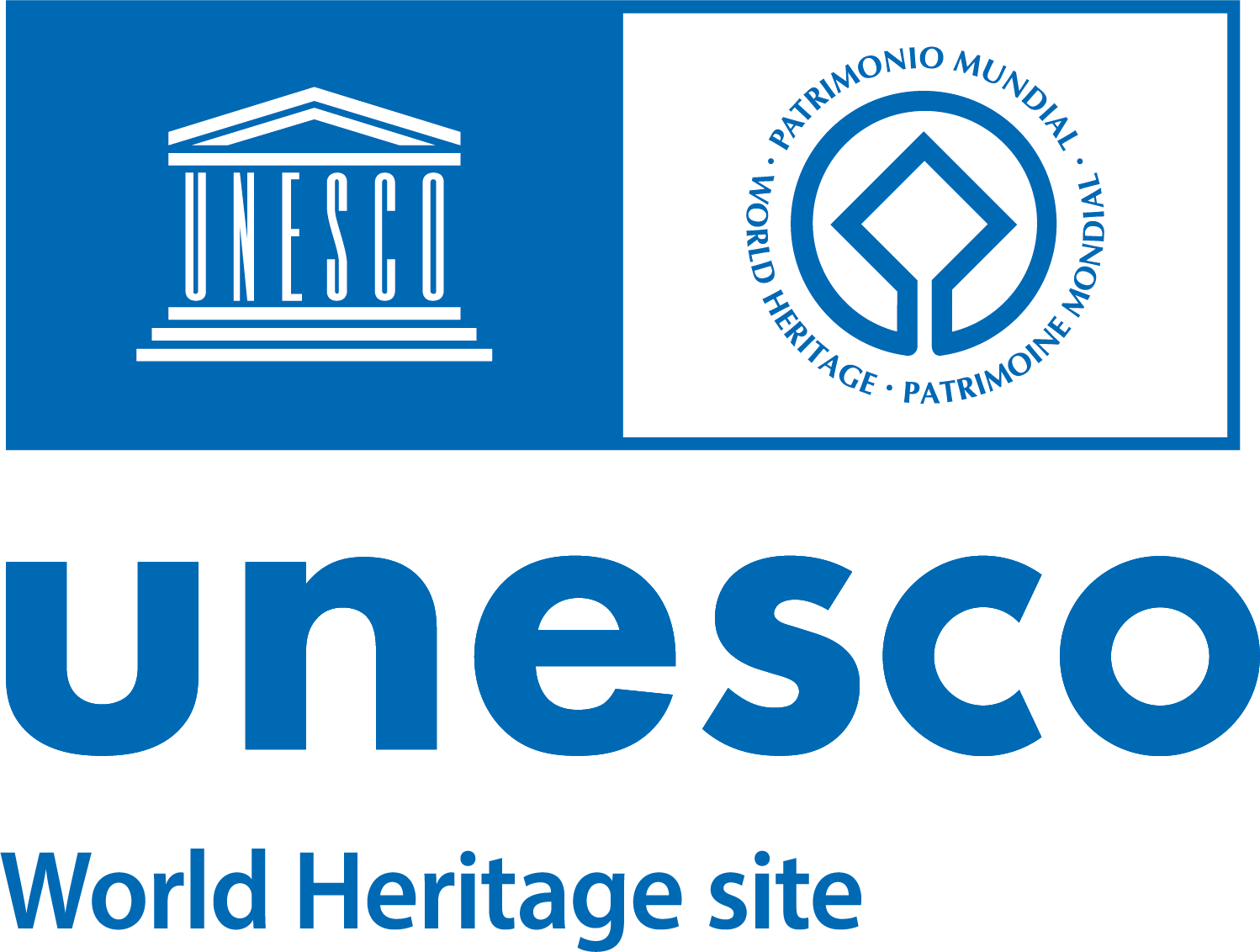The first information relating to Porta Santo Spirito dates to the 9th century, when Pope Leo IV (847–855) had a ring of walls built to protect Vatican territory lying outside the Aurelian Walls from future attacks. He called them the Leonine Walls.
Originally called the posterula Saxonum (postern of the Saxons), because it was close to the schola Saxonum, or Porta Nuova, during the papacy of Innocent III (1198–1216) its name changed to Porta Santo Spirito, after the nearby hospital complex that still exists today
Rebuilt by Antonio da Sangallo the Younger, who, after the devastating sack of Rome in 1527, was commissioned by Pope Paul III (1534–1549) to reinforce and extend the walls of Rome, in particular those of the Civitas leonina (Leonine City), the gate had a large central archway on the side exterior to the city, flanked by pairs of Doric columns and niches, perhaps intended for statues of saints.
In the centre of the attic storey on both facades there must have been marble plaques; the inscriptions, passed down by Pirro Ligorio, had been composed by Francesco Molza to celebrate the fortification work promoted by the pope. After the death of Sangallo in 1546, the work on the gate was continued by his successors according to the original plan but remained incomplete below the capitals.
Distinguished by the curvilinear shape of the exterior elevation, the gate, standing between the two spurs of the new Farnese wall, was on the ancient “urban” axis of the Via sub Janiculo, later Via della Lungara, which led to Porta Settimiana. This important link between the circuit of the Aurelian Walls of Trastevere and the papal one, adjusted and flanked by elegant villas at the beginning of the 16th century, was used by pilgrims. During jubilee years, after visiting Saint Peter’s, they went through Porta Santo Spirito, Porta Settimiana, Trastevere, then crossed Ponte Rotto to reach the basilicas of San Paolo and San Giovanni in Laterano.
In 1642, during the papacy of Urban VIII (1623–1644) and with the building of the new defensive system of the Janiculum Walls, Porta Santo Spirito ended up inside the city walls and lost its function as an entrance to the Vatican citadel. Deprived of its strategic role, the gate remained incomplete, as it can be seen today, almost hidden by the imposing bulk of Sangallo’s bastion nearby.
After the Unification of Italy (1870), the construction of the Tiber embankment and the urban planning transformations led to the demolition of stretches of the Vatican walls, though they have still for the most part been conserved. Traces of the demolished gates can still be seen by Porta Cavalleggeri and Porta Angelica.
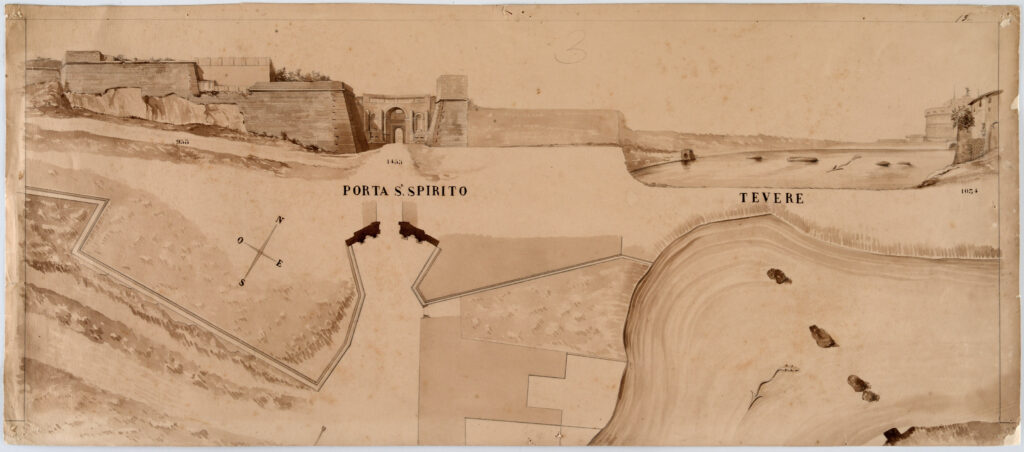

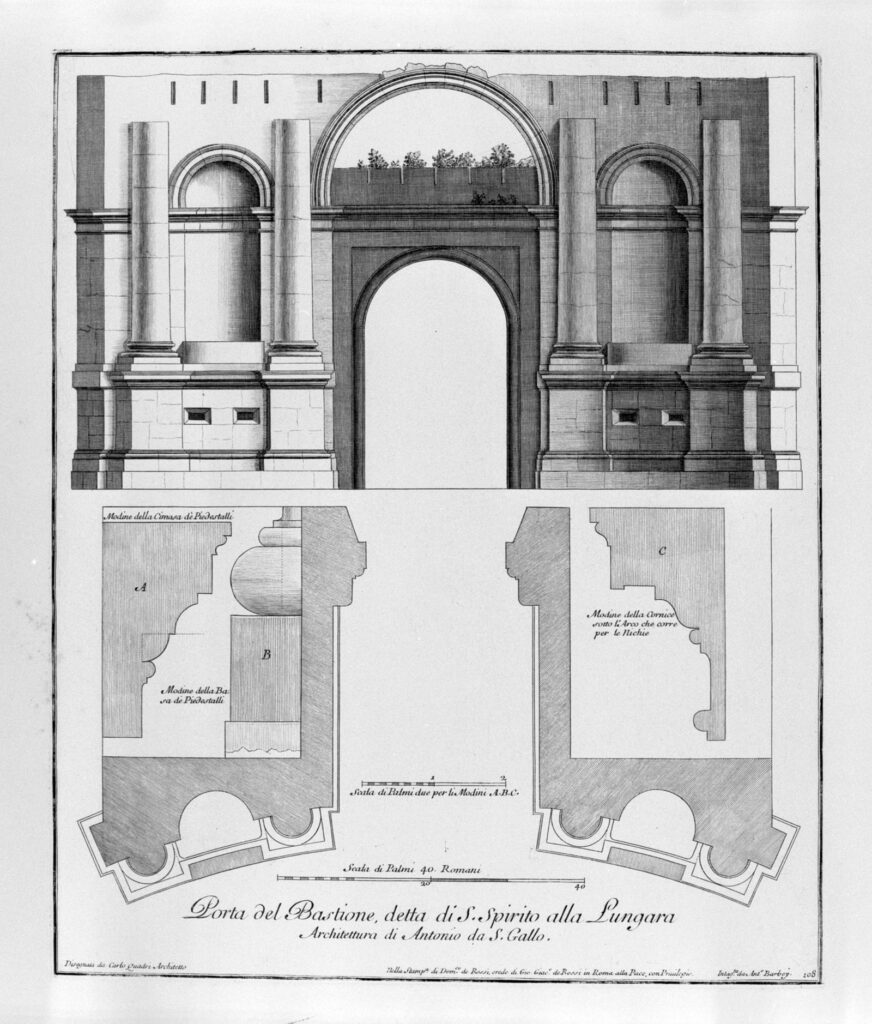
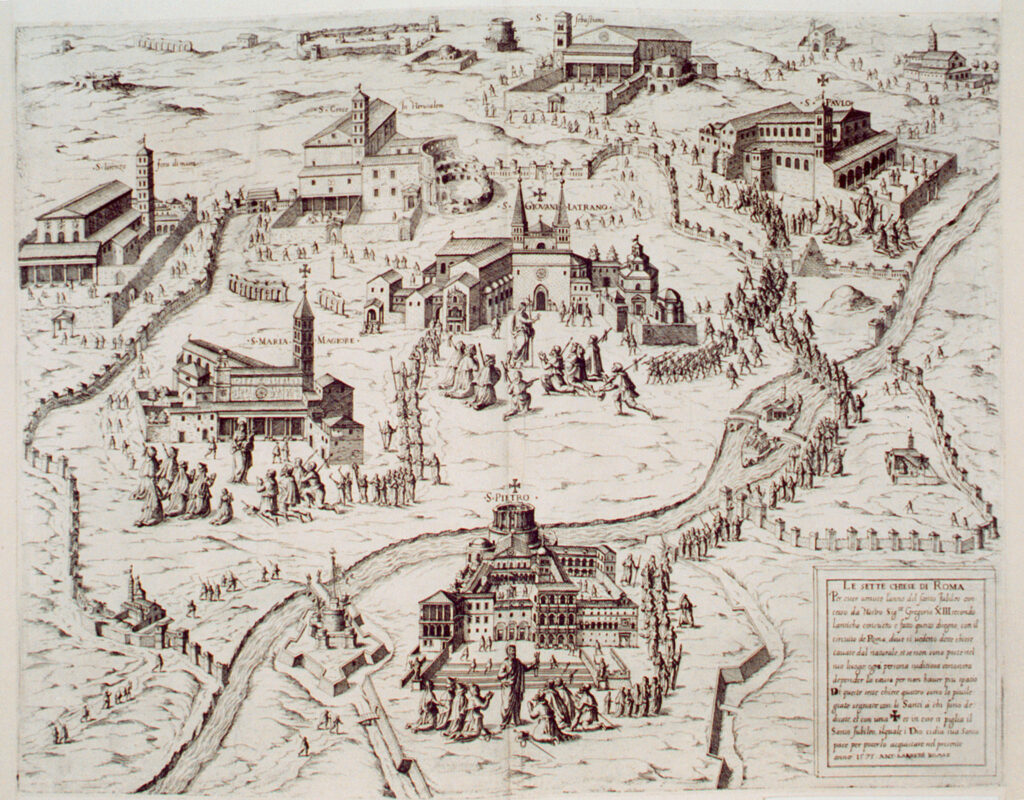
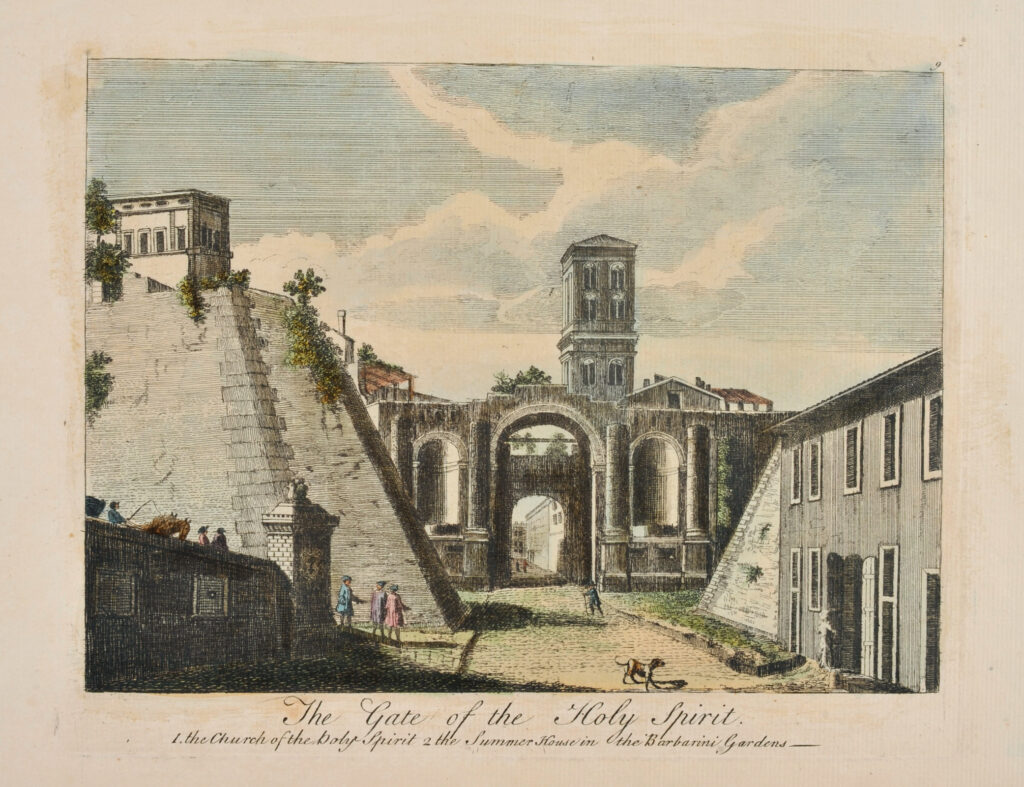
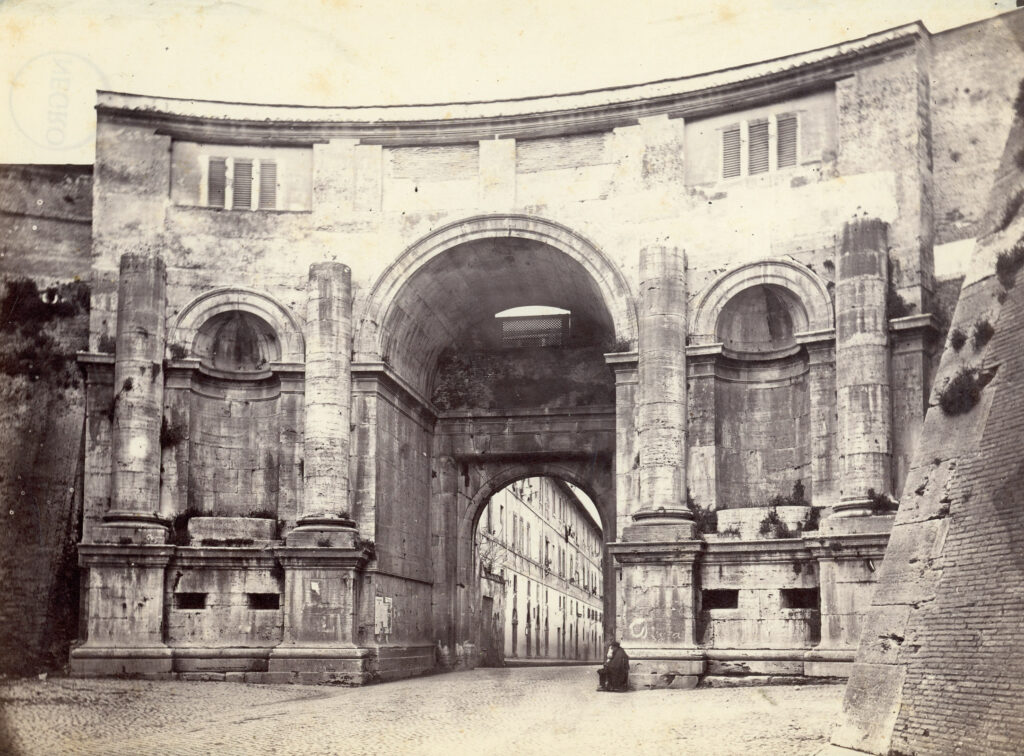
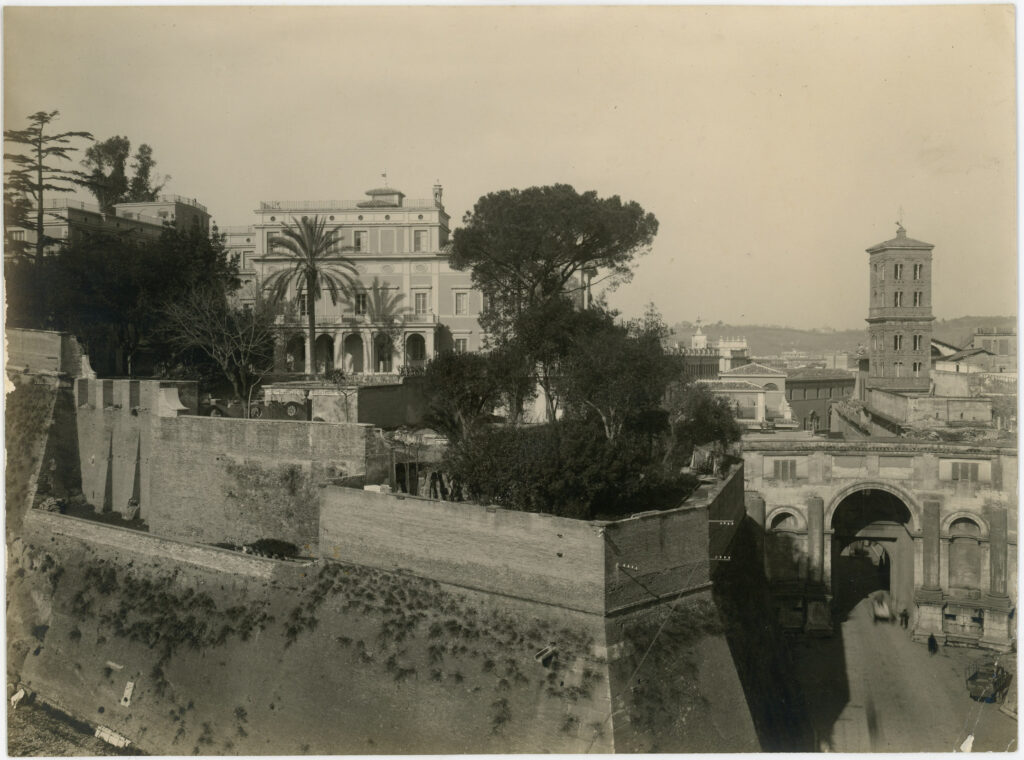
2. Plan and elevation of Porta Santo Spirito, beginning of the 18th century, print.
3. Borgo Santo Spirito: elevation of the gate and of the Ospedale Santo Spirito, first half of the 19th century, drawing.
4. E. DUPERAC, Map of Rome with the Seven Churches, 1575, print.
5. N. Parr, Porta di Santo Spirito, c.1750, watercolour etching.
6. View of Porta Santo Spirito, 1860-1890, photographic print.
7. Porta Santo Spirito, photographic print, 1930-1940.


